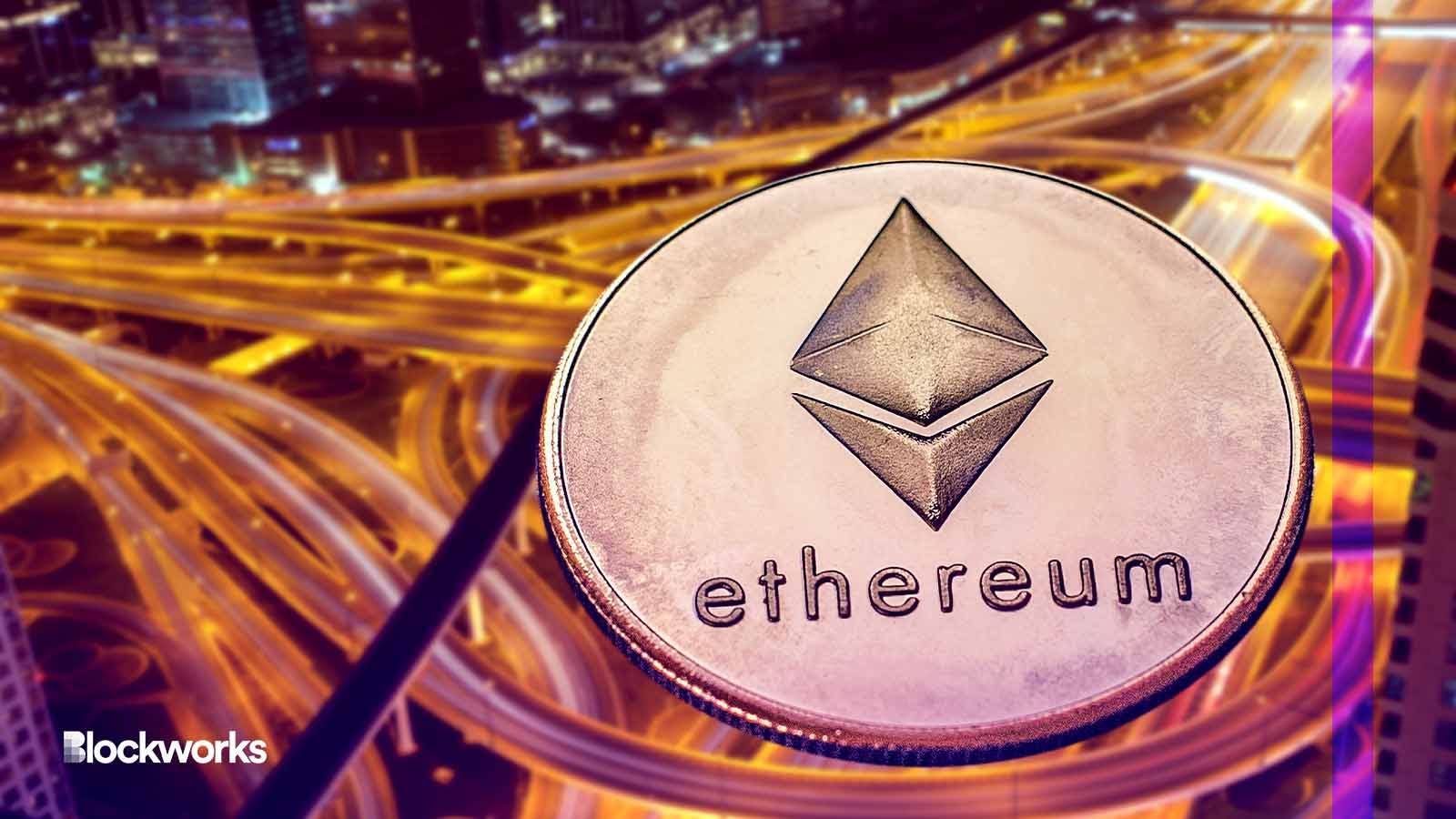Ethereum’s scaling infrastructure is better than ever. So where’s all the traffic?
Van Bourg says that scaling solutions were overbuilt during a particular period of high demand in Ethereum’s history

Melinda Nagy/Shutterstock modified by Blockworks
It was not too long ago that the key concern regarding Ethereum’s future was the desperate need for it to scale. High network activity and subsequent gas costs spawned an explosion of layer-2 solutions.
Thus, the most recent developments on Ethereum have been focused on infrastructure and how to reduce the load on the once heavily burdened network. Now, it finally seems to be ready for prime time.
But where did all the traffic go?
“The argument was always, well, if you increase throughput by a hundred X, which has happened, then you should increase transactions by a hundred X, but that hasn’t happened,” says the head of digital asset trading at GoldenTree, Avi Felman.
On the 1000x podcast (Spotify/Apple), Felman says, “you’ve just moved all the transactions from ether (ETH) to Arbitrum, and you’ve barely increased the overall amount of transactions that are occurring.”
“Everyone was kind of expecting it to look good on a deflationary basis,” Felman says, “but that’s just not going to be the case as long as activity is mostly on Base, or mostly on Arbitrum or mostly on Optimism.”
More lanes = more traffic?
Goldman Sachs executive director Jonah Van Bourg compares his expectations for Ethereum’s scaling solutions to the constant addition of freeway lanes in California. “Every time they add a new lane, it just brings more cars onto the freeway.”
“I thought the same thing would happen to ETH,” he says, but instead it’s looking more like the network of pipelines in the Permian Basin in Texas.
“Sometimes there’s just too much oil,” he says. “Everything’s bottlenecked. So then there’s this frenzy of pipeline building, which is effectively a scaling solution for an oil field. And then suddenly there’s just way too much pipeline capacity and not enough oil.”
Van Bourg explains that scaling solutions were overbuilt during a period of particularly high demand in Ethereum’s history. Now, capacity is much greater than demand, Van Bourg says, “so gas prices are just forced into the toilet.”
Read more: Ethereum blockspace on track for first unprofitable month since the Merge
Van Bourg expects the pendulum to “swing back the other way hard one day” when people realize, he says, “we have this thing that’s cheaper and better than AWS for our use case — and probably more permanent.”
“But that might be a year off, or six months off, or two years off, who knows.”
Van Bourg notes that negative sentiment regarding Ethereum on “crypto Twitter” might pressure holders to think short term. “You read tweets where people who have been ETH-bullish for five years are just like, ‘It’s over. Never buying this crap again.’”
“You look at your ETH and you look at these tweets and you’re probably saying to yourself, ‘Crap, I’m going to get out.’”
“Remind yourself,” he says, “that in 12 or 18 or 24 months when this thing is gassing higher and it’s trading $5,000 a token, those very same people will be talking about how ETH is the future, how it’s going to $50,000 a token, how they’ve been long all the way up.”
“It’s a gradient of outcomes,” he says. “It’s not black and white. ETH is not over. ETH is not the future. It’s this constantly evolving shade of gray.”
“You have to filter out the noise.”
Get the news in your inbox. Explore Blockworks newsletters:
- The Breakdown: Decoding crypto and the markets. Daily.
- 0xResearch: Alpha in your inbox. Think like an analyst.






